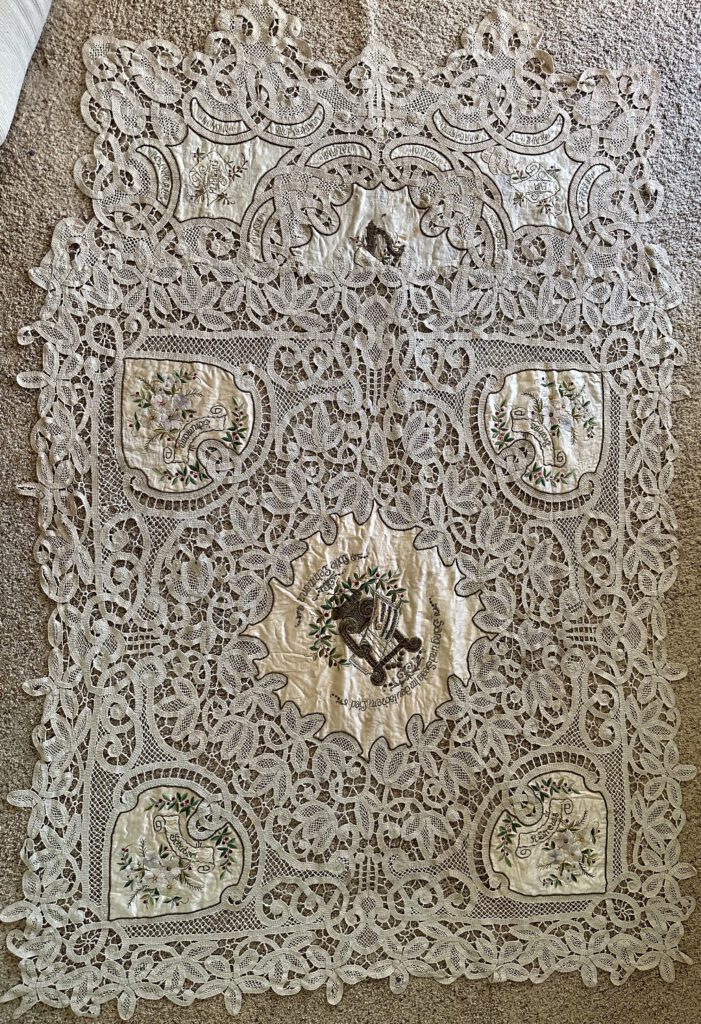Quilt Dedication
Susan and David Kuehn (David was president of the Music Academy of the West from 1993-2004) sent me a beautiful hand-crocheted table cloth with satin medallions in the corners all devoted to Lotte Lehmann’s career in opera and art song. The first one bears the inscription: Sang und Seele im deutschen Lied (Song and Soul in German song). If you look closely there’s actually notes that are from Schubert’s An die Musik (To Music). Below the lyre and laurel leaves is the name Lotte Lehmann.
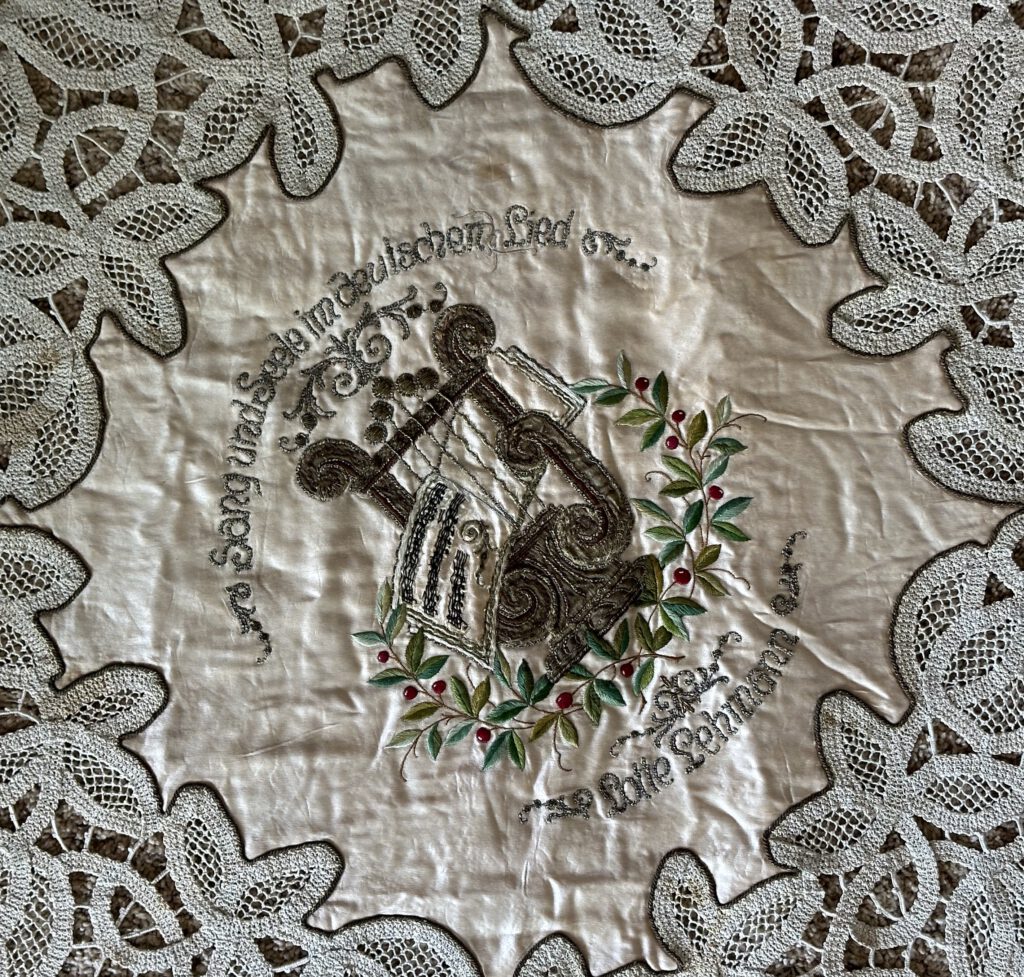
Going around the corner medalians we find Brahms. Of course Lehmann sang many Brahms Lieder.
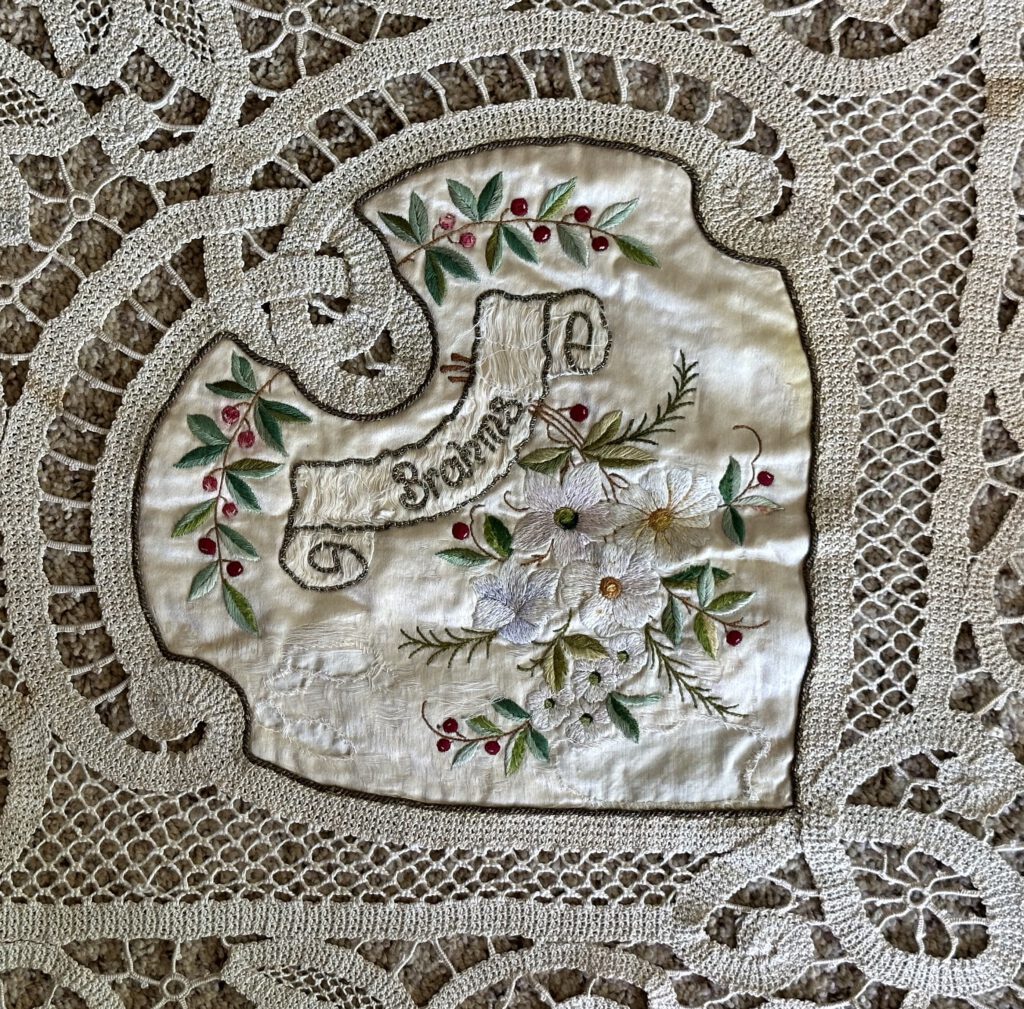
The next medalian features the name of Robert Schumann, whose Lieder were also among Lehmann favorites.
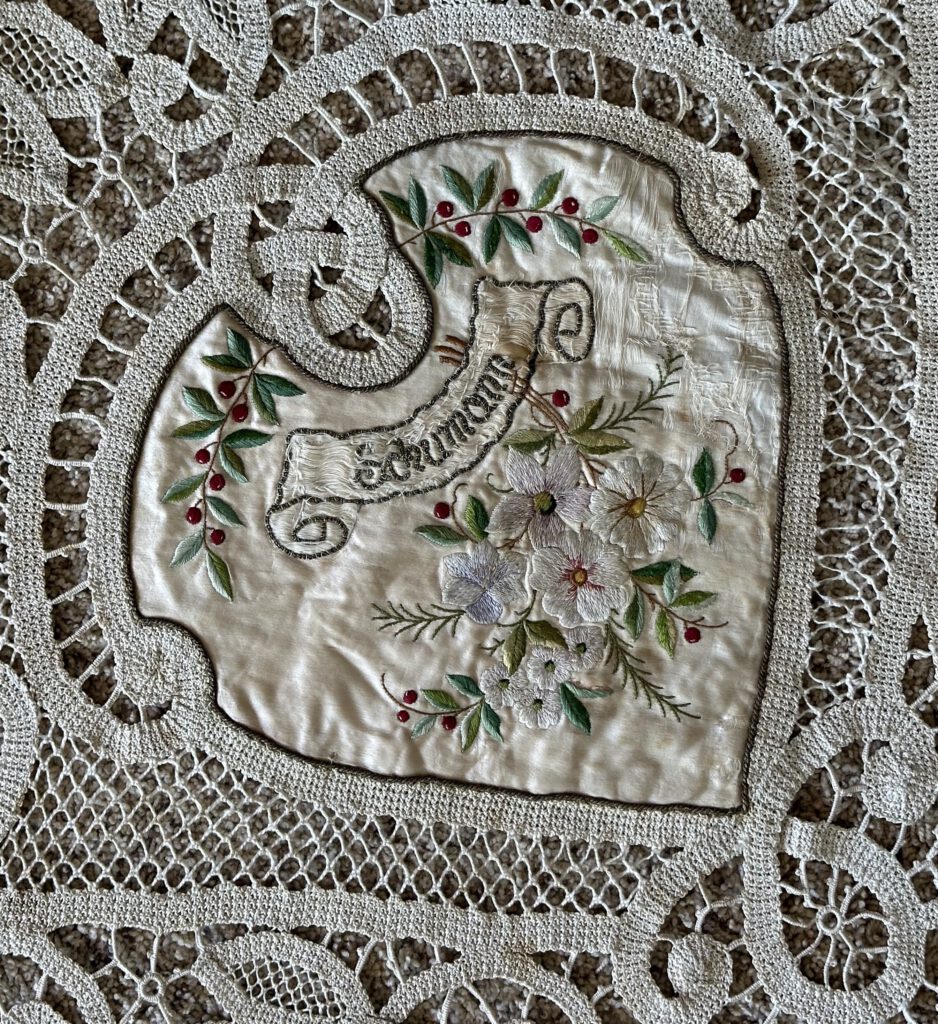
This is not meant to imply that Lehmann neglected the Lieder of Schubert, whose name may be found in the next corner.
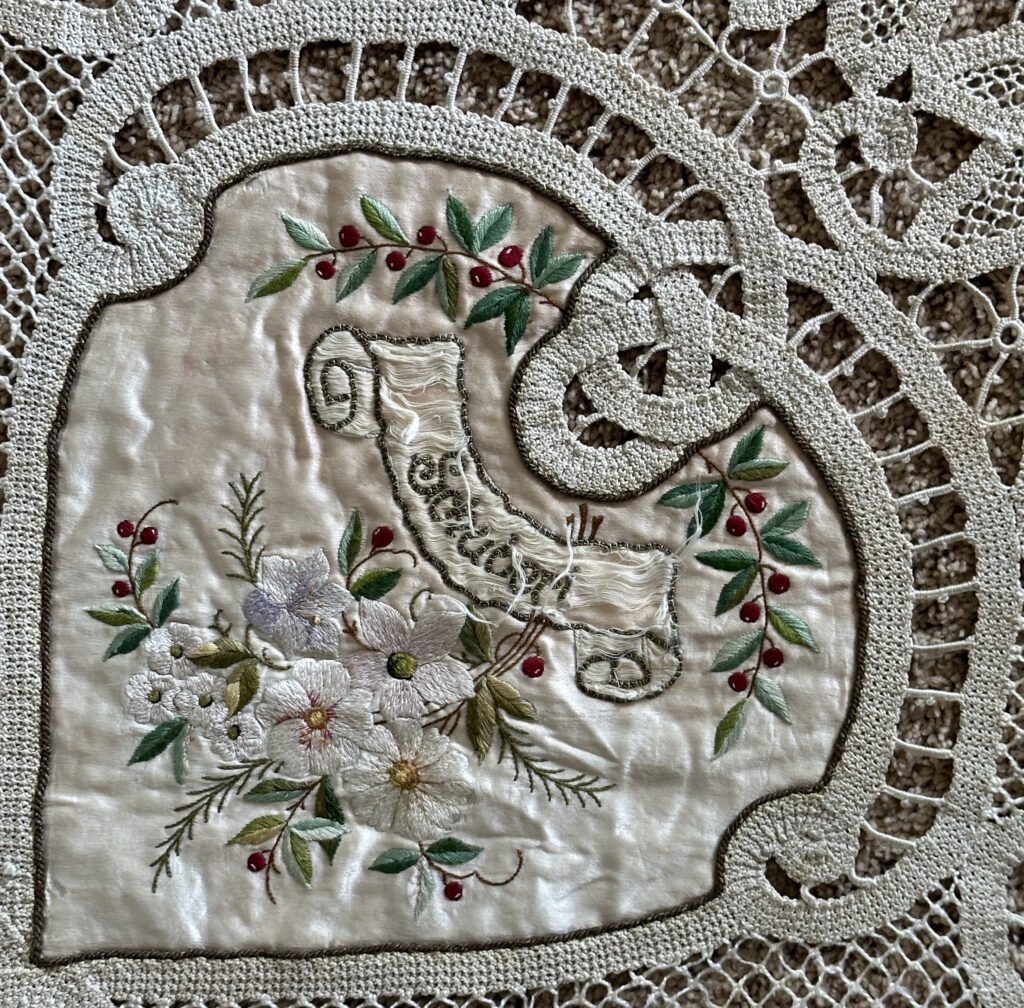
After that we can view the famous Lehmann roles such as Elisabeth (from Wagner’s Tannhäuser). Around that name other Lehmann operas are stitched into the fabric: Richard Strauss’ Rosenkavalier (in which Lehmann was the first to sing all three soprano roles: Sophie, Octavian, Marschallin); Mignon, by Ambroise Thomas, in which Lehmann sang the title role; Werther (for which the seamstress wrote Werthers Lotte, because in that Massenet opera, Lehmann sang the lead whose name was Lotte; search further and you’ll find Tosca, the Puccini opera for which Lehmann also sang the title role.
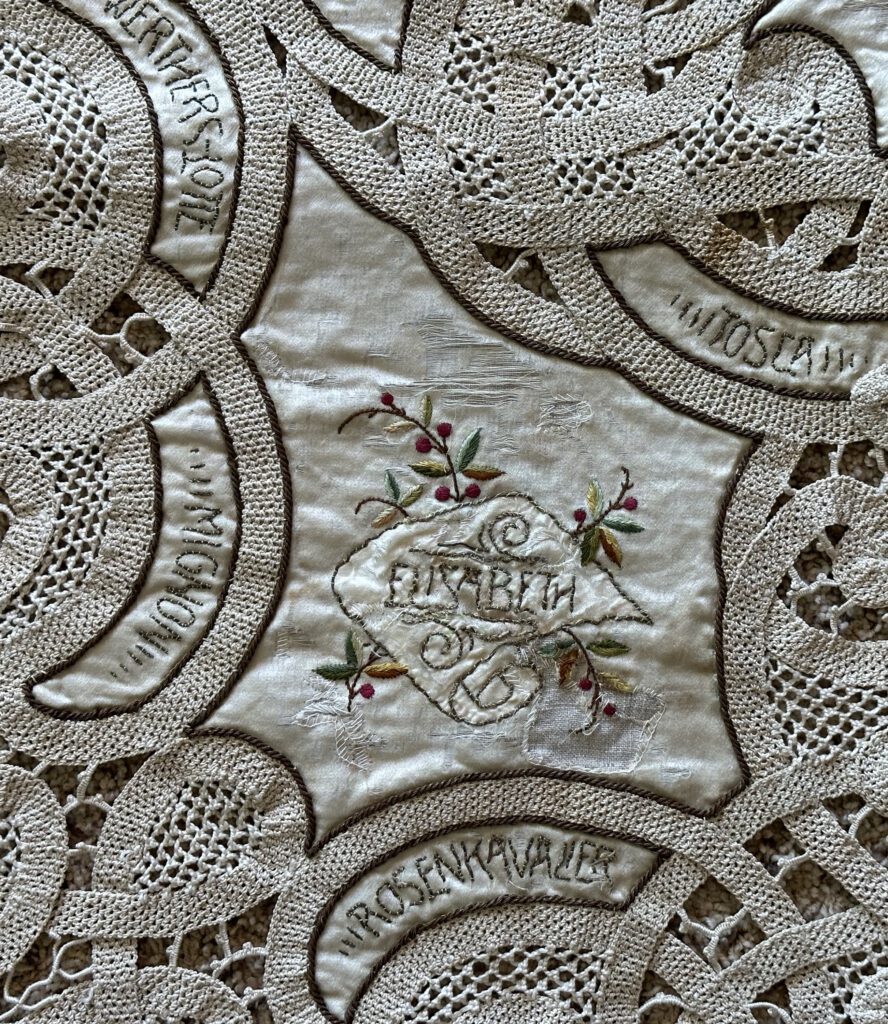
The following role is Eva from Wagner’s Die Meistersinger. Around this role you’ll find Marschallin (from Der Rosenkavalier) Lehmann’s most famous role; Arabella, the Strauss opera for which Lehmann sang the eponimous role in the Vienna premier; Beethoven’s Fidelio, in which Lehmann sang the title role; Margarete from Gounod’s Faust; and Agathe from Weber’s Der Freischütz.
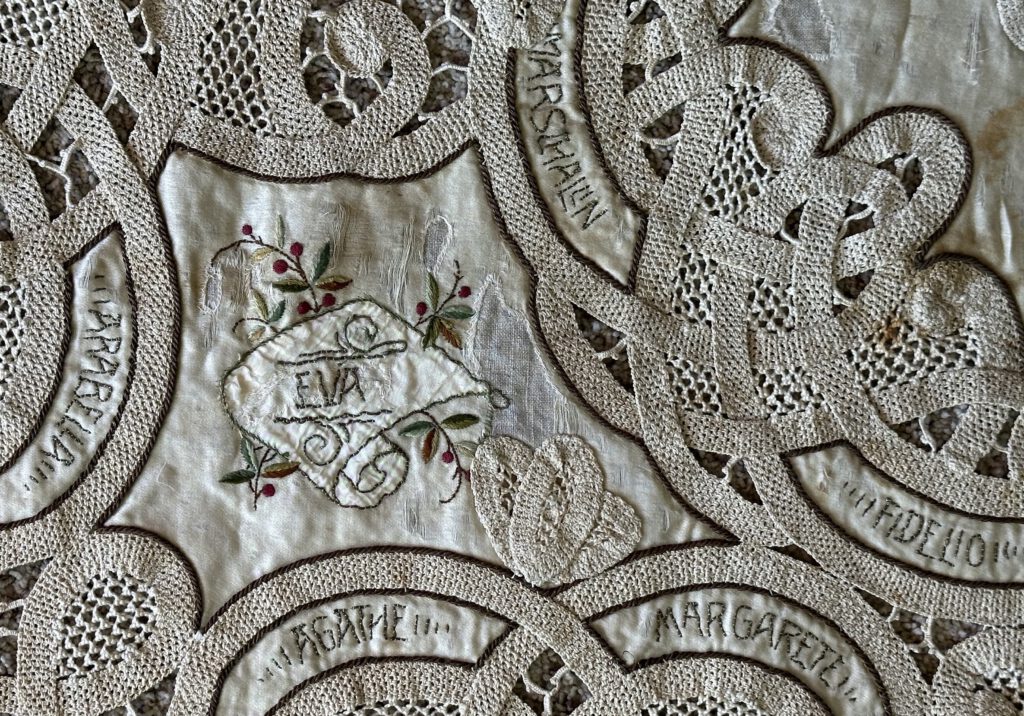
We now move to a partially destroyed portion of this table cloth. There’s a bit of a harp and a portion of Lehmann’s name. This has been re-sewn into the whole. The one formerly unmentioned Lehmann role sewn here is that of Tatjana that we more often read as Tatyana or Tatiana in Tchaikovsky’s Eugen Onegin.

The next panel is R. Strauss surrounded with flowers and laurel leaves. Lehmann sang in many Strauss operas: in the original Ariadne auf Naxos, she sang Echo. In the world premiere of the re-written version, she sang the Composer. Already mentioned were the three soprano roles of Der Rosenkavalier. In the world premier of Die Frau ohne Schatten Lehmann sang the Dyer’s Wife (also known as Die Färberin). In 1924 she premiered the role of Christine in Intermezzo. And finally, as noted above she sang Arabella in the opera of that name.
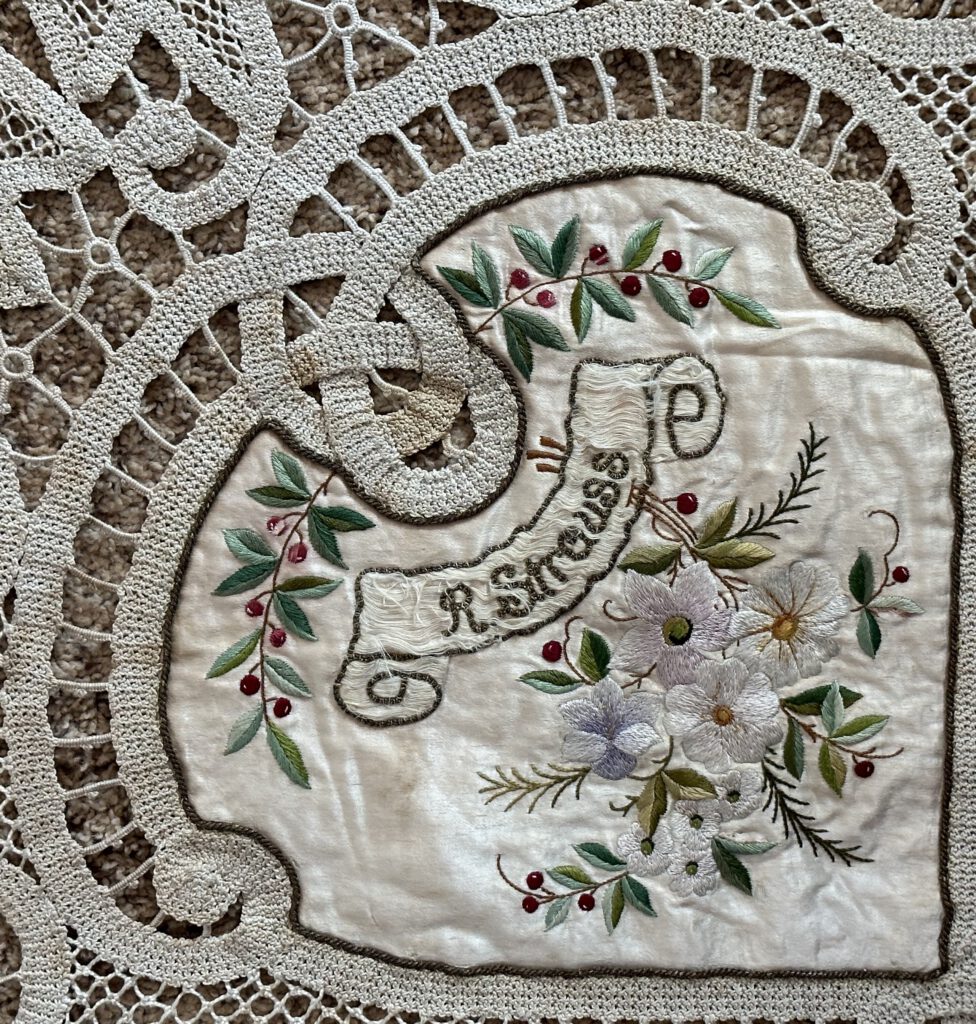
Here is the full table cloth laid out. If you know anything of its provinence or history, please let us know.
